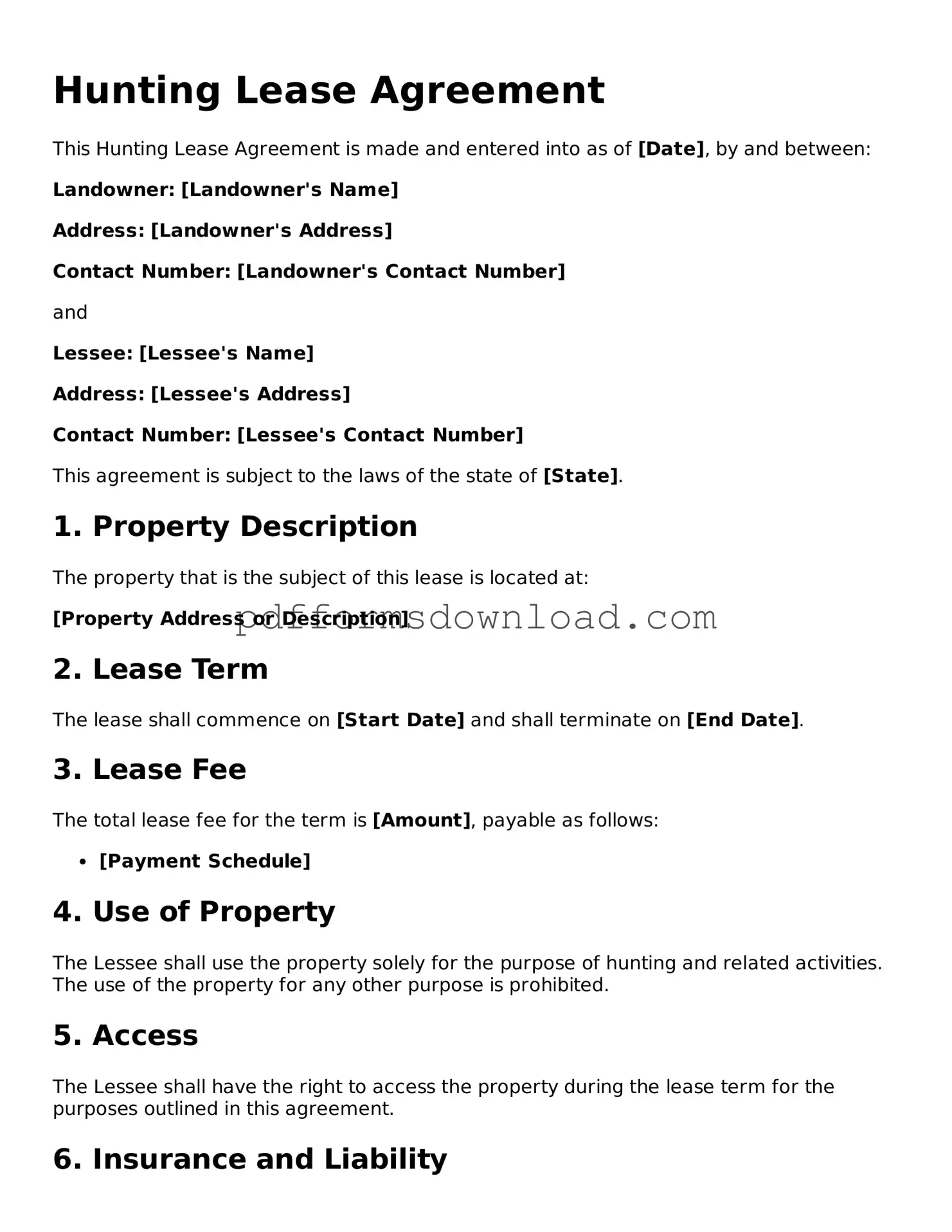What is a Hunting Lease Agreement?
A Hunting Lease Agreement is a legal document that outlines the terms and conditions under which one party (the lessor) allows another party (the lessee) to hunt on their property. This agreement specifies the rights and responsibilities of both parties, including the duration of the lease, payment terms, and rules regarding hunting practices. It serves to protect the interests of both the landowner and the hunter, ensuring a clear understanding of expectations.
What should be included in a Hunting Lease Agreement?
Essential elements of a Hunting Lease Agreement typically include the names and contact information of both parties, a detailed description of the property, the lease term, payment details, and any specific rules regarding hunting methods, types of game, and safety regulations. Additionally, it may outline liability issues and insurance requirements to safeguard both parties against potential risks.
How long does a Hunting Lease Agreement usually last?
The duration of a Hunting Lease Agreement can vary significantly. Some leases are structured for a single season, while others may extend for several years. It is crucial for both parties to agree on the lease term and include it in the document. This clarity helps prevent misunderstandings and ensures that both parties are aware of their commitments.
Can a Hunting Lease Agreement be terminated early?
Yes, a Hunting Lease Agreement can be terminated early, but this usually requires mutual consent or specific conditions outlined in the agreement. Common reasons for early termination include violation of the lease terms, failure to make payments, or changes in land use. It is advisable to include a termination clause in the agreement to clarify the process and any penalties involved.
What happens if there is a dispute regarding the Hunting Lease Agreement?
In the event of a dispute, both parties should first attempt to resolve the issue through direct communication. If this does not lead to a resolution, the agreement may include a clause specifying mediation or arbitration as the next steps. This approach can be less costly and time-consuming than litigation. Seeking legal advice can also be beneficial to ensure that both parties understand their rights and obligations.
